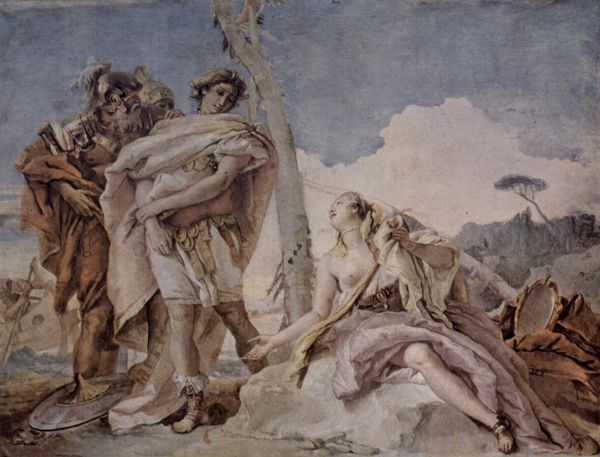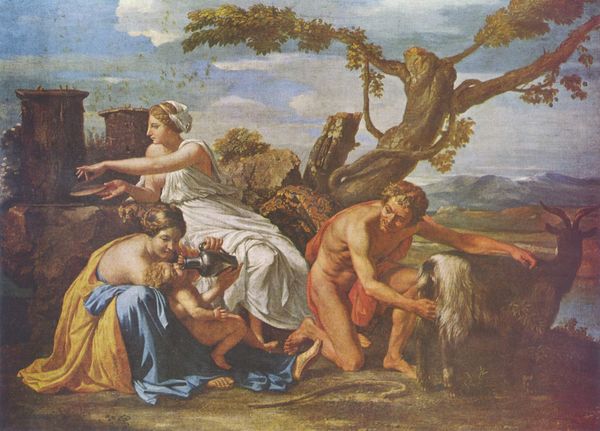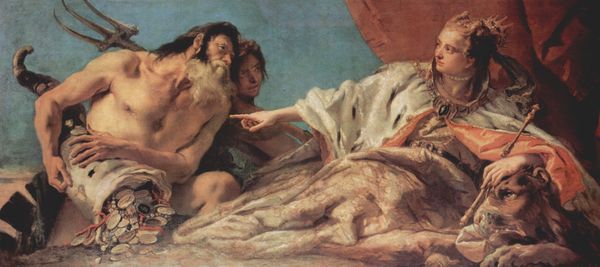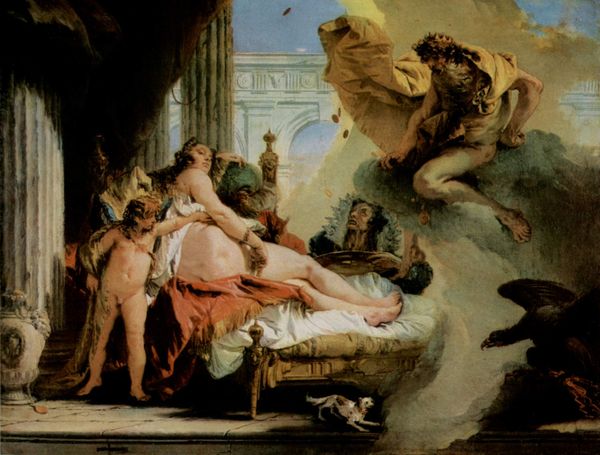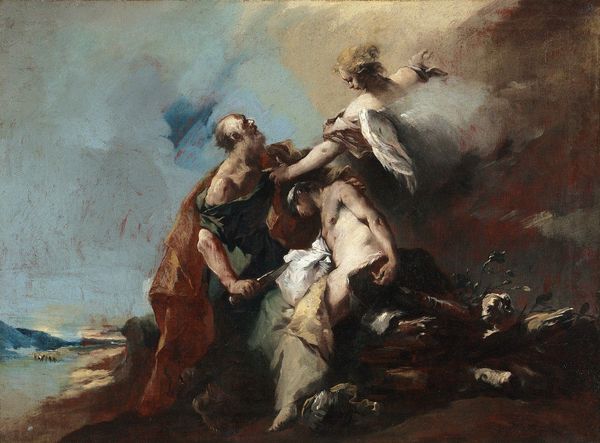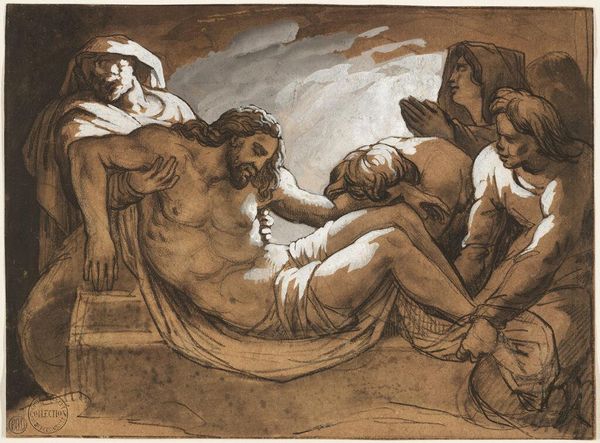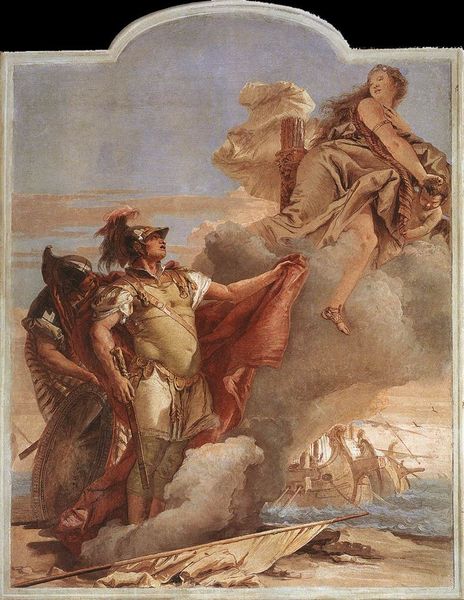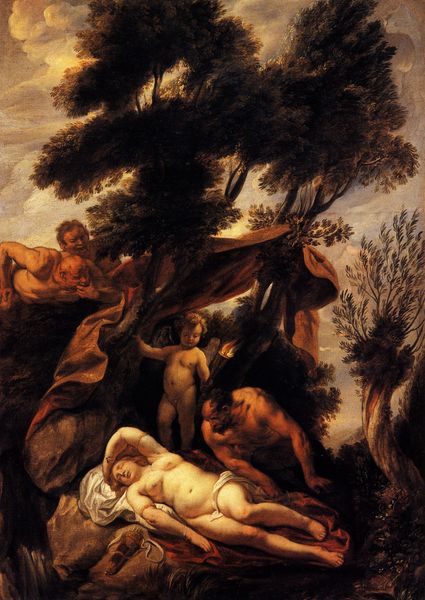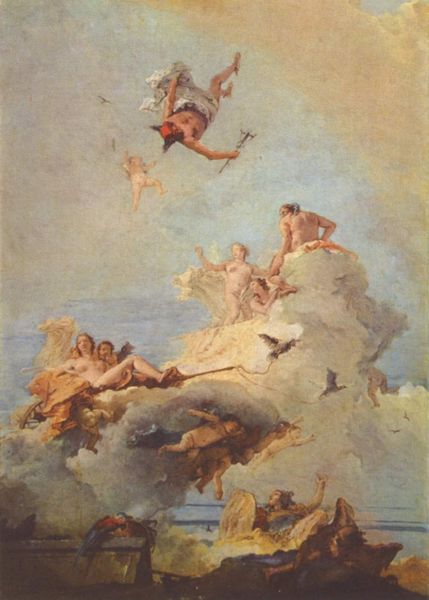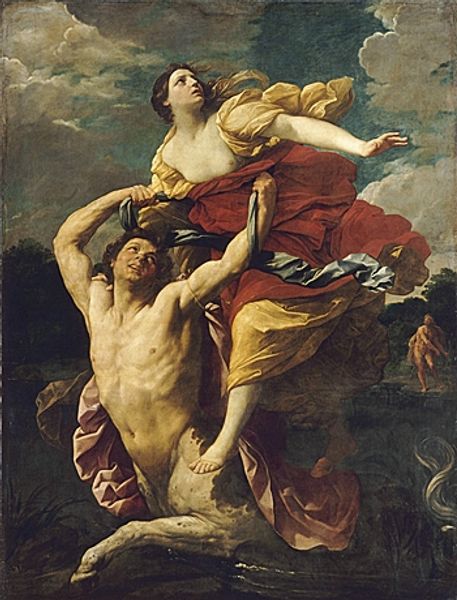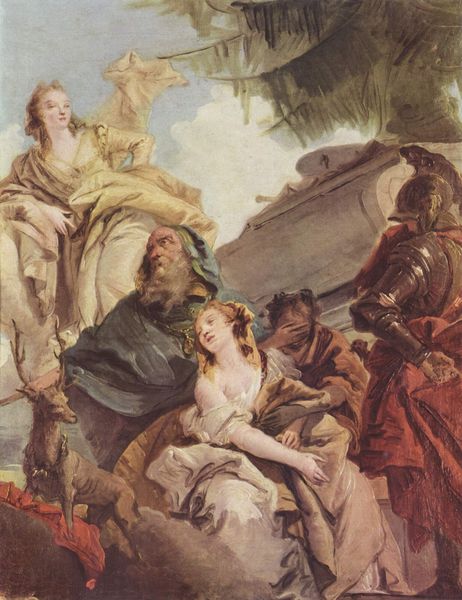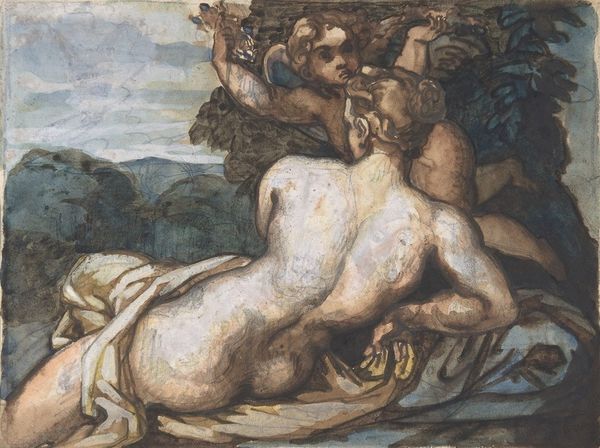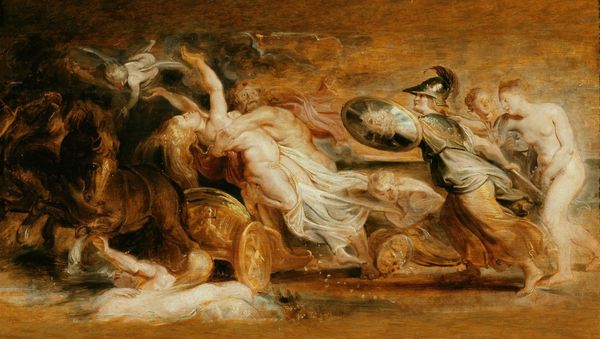
painting, oil-paint
#
allegory
#
painting
#
oil-paint
#
figuration
#
oil painting
#
roman-mythology
#
mythology
#
nude
#
rococo
Copyright: Public domain
Editor: This is "Mars, Venus and Cupid," painted in 1757 by Giovanni Domenico Tiepolo. It's an oil painting that features these rather imposing figures floating on what appear to be clouds. It has a very airy, ethereal feel. How would you interpret this work? Curator: Well, putting it within its historical context, Tiepolo was working in an era when the aristocracy's taste for mythologies provided a ready market for these sorts of allegorical paintings. But look at how Mars, the god of war, is portrayed: he appears almost languid, defeated by Venus. Is Tiepolo perhaps offering a subtle commentary on the declining martial power of the Venetian Republic, replaced by the soft allure of pleasure and leisure represented by Venus? Editor: So, it’s less about the figures themselves and more about what they represent within Venetian society at the time? Curator: Exactly. The placement of such images mattered; their location shaped their meanings. The airy lightness, characteristic of the Rococo style, speaks to a kind of decadence. Where do you think such a painting would likely have been displayed? Editor: Maybe in a private villa, meant to impress guests? Curator: Precisely! It reinforces a certain worldview, doesn’t it? It’s meant to portray the patron as refined and learned, someone who appreciates these allusions to classical mythology, whilst also maybe nodding at a certain cultural weariness of war and valor. Editor: That's fascinating! I hadn't considered the role of display in shaping our understanding. Curator: Understanding art is often about understanding the social function it performs. That’s one of the many lessons I continue to learn when viewing artworks, from those by Tiepolo, or later works.
Comments
No comments
Be the first to comment and join the conversation on the ultimate creative platform.
